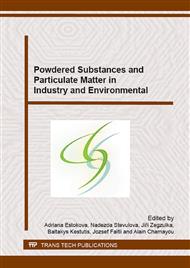p.102
p.108
p.114
p.121
p.130
p.140
p.146
p.153
p.161
Development of Fly-Ash Based Hydraulic Backfilling Technology for the Final Closure of Underground Mines
Abstract:
The active mining of the Mátraszentimre (Hungary) underground base-metal mine was halted in 1985. So far enormous research and efforts have been taken for the final closure of the mine. The technology of fly-ash based hydraulic backfilling was selected. About 95 000 tons of fly-ash backfilling is necessary to close the mine. A suitable technology have been developed, installed and put into operation. So far about 14 400 tons fly ash have been backfilled.This paper summarizes the main results and elements of the process engineering part of this work. The pozzolanic activity of fly-ash from the Mátra Power Station was examined in order to develop a new hydraulic binder with the addition of lime. As results of the different examinations it had been decided that the backfilling material should be lignite fly-ash from the tailings pond of the nearby Mátra Power Plant. The fly-ash hydraulic transport system of the Mátra Power Station was designed by our institute back in 1998. This system is still operating and now serving the material for backfilling. The knowledge of designing the power station pipeline system was utilized at designing the hydraulic backfilling system. The main technical parameters of the solid – liquid pipe flow were designed based on the Tarján – Faitli: coarse mixture flow in fine suspension flow model then and now as well. The design covered many other aspects of the task such as material characterization and mixing, settling behavior of the backfill, dewatering and mechanical properties of the backfill, water permeability and so on...
Info:
Periodical:
Pages:
130-139
Citation:
Online since:
October 2015
Authors:
Price:
Сopyright:
© 2016 Trans Tech Publications Ltd. All Rights Reserved
Share:
Citation:


